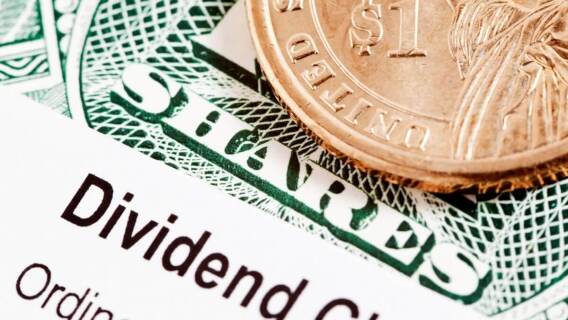The market goes up and down. But dividends keep coming in no matter what. That’s why dividend payers are the best-performing stocks on the market over time.
I believe in the market. Stocks will inevitably trend higher over time as they have consistently throughout the decades. But the market can be a rollercoaster in the near term. The S&P 500 was up last year but it was down the year before. After all the commentary and headlines over the last two years, the market indexes are at the same level they were at the beginning of 2022. It’s been a noisy journey to nowhere.
Sure, there is reason for optimism going forward. Inflation is way down, interest rates have likely peaked, and the economy is still solid. We may be getting past this Fed rate hiking cycle, the steepest in decades, without the usual economic pain. It’s a new bull market and the S&P is on the cusp of new all-time highs.
But much uncertainty remains. Historically, inflation never goes gently into that goodnight. Whenever inflation has risen above 5% for a sustained period in the past, it has taken at least a decade to get rid of. Inflation could reignite and make the Fed hawkish again unless the economy rolls over. That’s another risk. The recession that never came may be just a little further down the road.
[text_ad]
Then there are the wars going on in the Ukraine and Gaza. Things could escalate and spook the market at any time. Plus, it’s a Presidential election year. This one promises to be turbulent as the country is more divided than it has been in decades. There could be controversy over the results and civil unrest.
Anything is possible. But dividends will roll in no matter what happens. Over time, dividend-paying stocks have vastly outperformed non-dividend-payers. Companies that consistently grow dividends have performed best of all. And the outperformance comes with less volatility than the overall market. There are two primary reasons for the superior results, the money and the company.
Dividends themselves have accounted for more than 40% of S&P 500 total returns over the past century. That’s a huge chunk. It’s also worth noting that during the highest inflationary decades of the past century, the 1940s and 1970s, dividends’ contribution to S&P total returns was 67% and 78% respectively.
It’s also true that companies that consistently pay and grow dividends tend to be the most stable and reliable stocks. Consistent dividends must be backed up by consistent revenues and earnings. Companies that can provide such stability over many years tend to have reliable businesses with great niches. Consistent and growing dividends are actually a great screening method for quality stocks.
These are great stocks to own in any environment but also tend to have far less downside during periods when the dog dew hits the fan.
I believe the market will end up delivering positive returns in 2024. But you never know. It’s worth it for both conservative and aggressive investors to have at least some representation by strong dividend-paying stocks in their portfolios. It makes the ride smoother and more predictable and may help enable you to ride out the next downturn to be well invested for the next upturn.
Here’s a great one to consider.
Alexandria Real Estate Equities (ARE)
Yield 4.1%
Alexandria Real Estate Equities (ARE) is a U.S.-based Real Estate Investment Trust (REIT) specializing in office buildings and laboratories leased to tenants primarily engaged in the life science and technology sectors. It has over 800 tenants primarily in locations that are clusters for innovation in greater Boston, the San Fransico Bay area, New York City, San Diego, Seatle, and Washington D.C.
The primarily state-of-the-art laboratory properties are mostly clustered in urban life science, agricultural technology, and technology campuses in the U.S. Properties are leased to tenants under long-term triple net leases with automatic rent escalations. Triple net leases account for just about all of revenues.
Tenants pay for everything, including insurance, taxes, utilities, and maintenance. These leases provide a big advantage by eliminating unexpected and variable expenses and providing a much more predictable revenue stream.
These properties have high demand that should continue to grow for many years to come. Alexandra’s tenants are major pharmaceutical, biotech, life science, and technology companies. The biggest tenants include Bristol Myers Squibb (BMY), Moderna (MRNA), and Eli Lilly (LLY).
For many years, ARE delivered the performance one would expect from a high-quality REIT operating in a growing space. It performed on par with the S&P 500 during a bull market with less volatility and blew away the returns of the REIT index in every measurable period for ten years. But things turned ugly in 2022. Over the past two calendar years, ARE plummeted 40%.
The fall in price isn’t because of internal or fundamental reasons. Revenues, earnings, and occupancy rates have remained solid. Revenues are up 10.9% in the first nine months of 2023 and earnings have grown in the high single digits. It’s the macro environment that has battered this stock.
REITs have been one of the worst-performing market sectors over the last two calendar years because of rising interest rates. Higher interest rates make alternative income-generating investments in the fixed-income arena more competitive. The higher rates also increase the cost of funding for REITS that need to borrow money to expand because they are required to pay out the bulk of earnings in dividends.
The inflation and rising interest rates environment caused the Vanguard Real Estate Index Fund (VNQ) to fall 25% over the last two years. But ARE fell a lot more because of another issue. Alexandria is technically classified as an office REIT, and office space is in crisis. After the pandemic, many workers continue to work at home and are not returning to the office. In several major cities, office occupancy rates remain as low as 60%.
The work-from-home trend is expected to continue, and workers are not expected to return to offices at anywhere near pre-pandemic levels. There is currently way more office space available than demand. Investors understand this and are avoiding office REITs like the plaque. In an unforgiving market, ARE has been subjected to the double whammy of rising interest rates and the crash of office properties.
But the problem doesn’t apply to Alexandria’s properties. The market has been blind to the distinction and has thrown the baby out with the bathwater. Sure, if all you need is a cubicle and a computer you can work from home. But laboratories can’t be duplicated at home. And the related offices provide a level of innovation and collaboration that needs people to be there. That’s why Alexandria’s properties have a 93.7% occupancy rate that is expected to grow in the quarters ahead.
Right now, ARE offers both a cheap price and positive momentum. While it’s up nearly 40% from the October low, you haven’t missed the boat. The stock is still 40% below the all-time high and has higher earnings now.
[author_ad]

